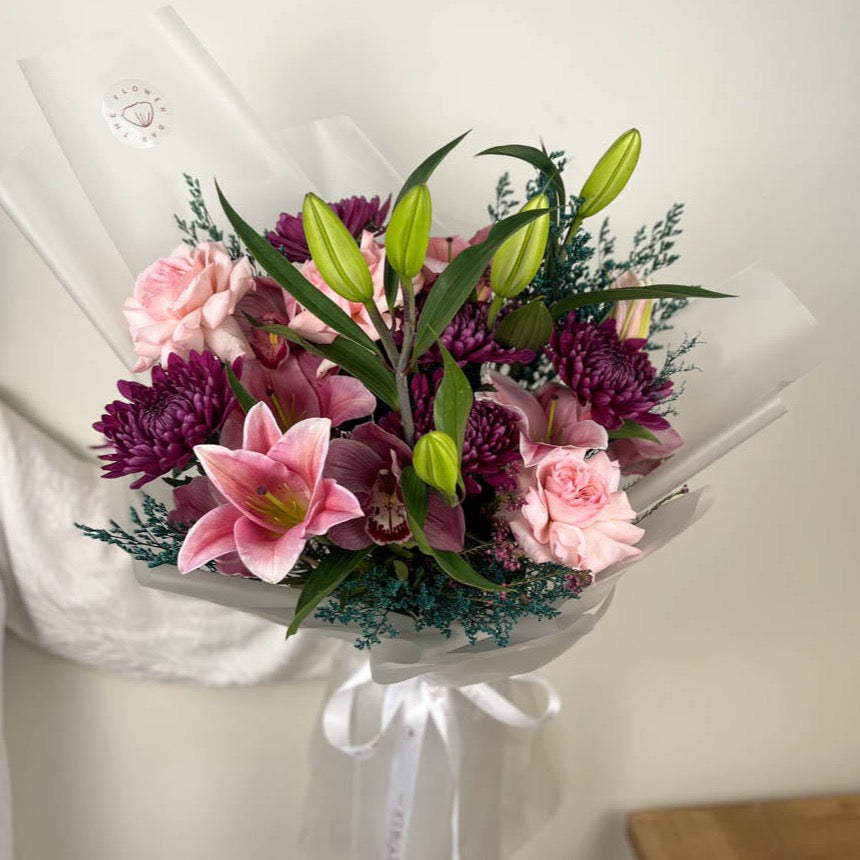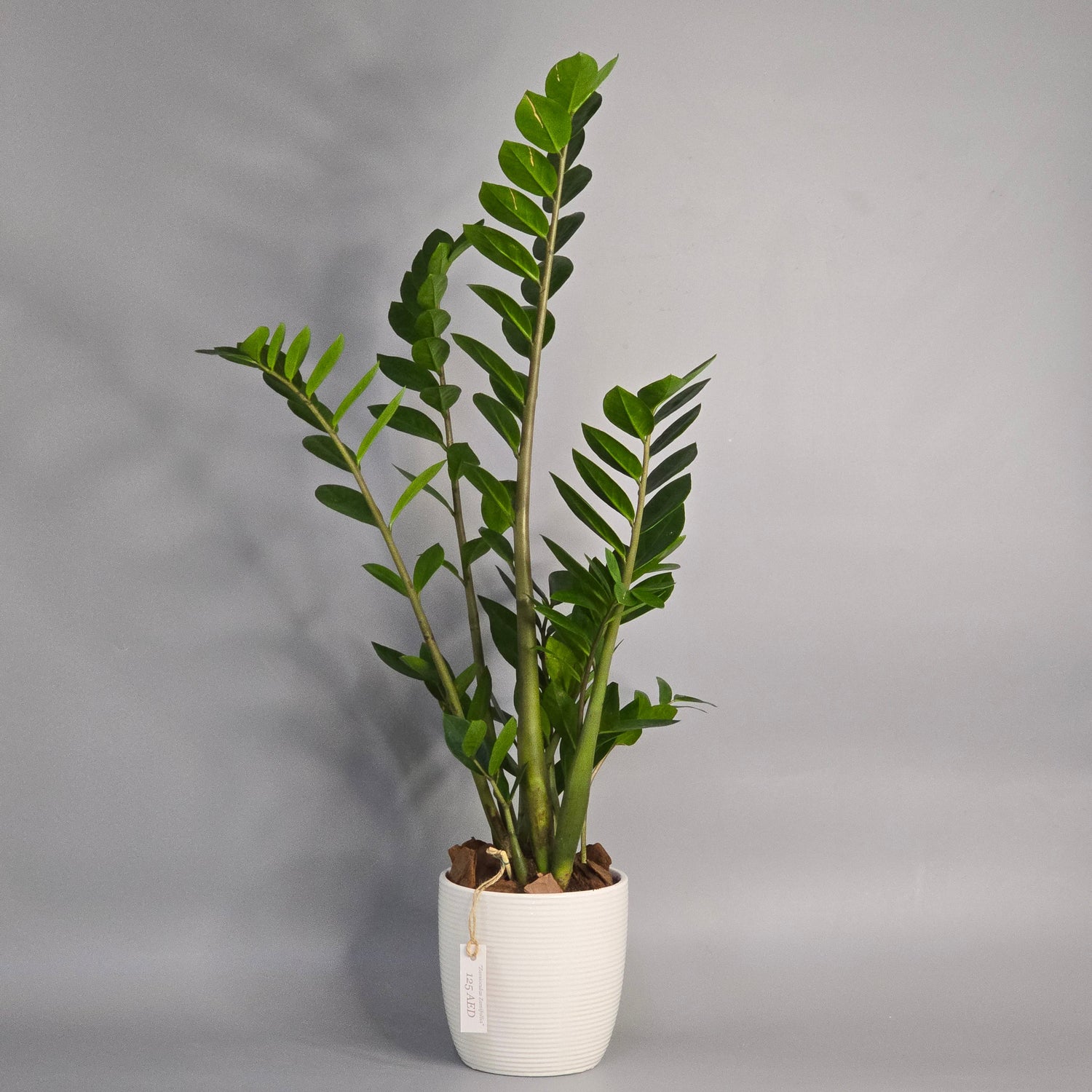The Zamioculcas Zamifolia: A Resilient and Beautiful Addition to Your Indoor Garden
When it comes to low-maintenance indoor plants that thrive in less-than-ideal conditions, few can rival the Zamioculcas zamifolia, commonly known as the ZZ plant. Originating from Eastern Africa, this tropical perennial has become a favorite for plant enthusiasts and interior decorators alike. Known for its striking, waxy leaves and its ability to survive in various environments, the ZZ plant has earned its reputation as one of the easiest houseplants to care for.
The Origins of the ZZ Plant
The Zamioculcas zamifolia is native to regions such as Kenya, Tanzania, and Zanzibar, where it thrives in the wild under the shade of taller plants. The ZZ plant’s natural habitat includes rocky, dry soils with low moisture levels, making it highly adaptable to a variety of conditions. It has evolved to store water in its thick, fleshy rhizomes (underground stems), allowing it to survive in arid environments. This unique adaptation gives the ZZ plant an impressive ability to go weeks without water, which is a big reason why it’s so appealing to people who don’t have a green thumb or struggle to remember plant care.
Recognizing the ZZ Plant
One of the ZZ plant’s standout features is its glossy, dark green leaves that grow in long, graceful fronds. These leaves grow in a feather-like pattern, each leaflet sitting perfectly aligned along the central stem. The plant's overall growth habit is upright and bushy, making it an attractive addition to any home or office space. It can grow up to 3 feet (90 cm) tall, though its size can be managed by pruning and regular care.
The ZZ plant is often admired for its ability to thrive in low light conditions. While it does enjoy moderate to bright indirect light, it can also grow well in rooms with low or filtered sunlight, making it a popular choice for spaces with limited natural light. It is particularly effective at brightening up corners and darker areas where other plants may struggle.
Care Requirements of the ZZ Plant
One of the main reasons the ZZ plant is so loved by houseplant owners is its minimal care needs. It can withstand neglect, but with a little attention, it can reward you with years of growth. Here are some tips to help you care for your ZZ plant:
Light: As mentioned, the ZZ plant is highly adaptable when it comes to light. It thrives in low to bright indirect light, making it an ideal candidate for areas that don't get much sunlight. However, it can also tolerate some direct sunlight, especially in the morning or late afternoon. Direct sunlight during the midday hours may scorch its leaves, so it's important to place it in a location where it’s shielded from intense sun rays.
Watering: The ZZ plant is drought-tolerant, thanks to its thick, waxy leaves and water-storing rhizomes. Overwatering is a common mistake among ZZ plant owners. It's crucial to allow the soil to dry out between waterings to prevent root rot. During the growing season (spring and summer), watering once every two weeks should be enough, and in the winter, you can reduce watering even further. A good rule of thumb is to water only when the top 2-3 inches of soil feel dry to the touch.
Soil: Well-draining soil is key to the ZZ plant’s success. A mixture of potting soil with added perlite or sand for better drainage is ideal. The ZZ plant can suffer if water is left sitting around its roots for too long, so proper drainage is crucial to prevent root rot.
Fertilizing: While ZZ plants aren’t heavy feeders, a light feeding during the growing season can promote healthy growth. A balanced, water-soluble fertilizer applied every 4-6 weeks should suffice. Avoid fertilizing during the winter when the plant is dormant.
Humidity and Temperature: The ZZ plant thrives in average humidity levels and can tolerate temperatures ranging from 60°F to 75°F (16°C to 24°C). It’s best to avoid placing it in areas that are subject to extreme temperature fluctuations, such as near air conditioners, heaters, or drafty windows.
Repotting: ZZ plants grow relatively slowly, which means they don’t need frequent repotting. When the plant outgrows its pot or becomes root-bound, it can be repotted into a slightly larger container. Typically, repotting once every 1-2 years is sufficient. Always ensure that the new pot has proper drainage holes to prevent water retention.
Propagating the ZZ Plant
The ZZ plant can be propagated through leaf cuttings, although the process can take some patience. To propagate, cut a healthy leaf from the plant and place it in a container of water or directly in soil. Rooting may take several weeks, and once the new plant has developed sufficient roots, it can be transferred into its own pot.
The ZZ Plant’s Benefits Beyond Beauty
Aside from its aesthetic appeal, the ZZ plant also boasts several other benefits. As an air-purifying plant, it can help improve indoor air quality by filtering out toxins like xylene, toluene, and benzene. These chemicals are commonly found in household cleaning products and indoor pollutants, and having a ZZ plant in your space can contribute to a healthier, more breathable environment.
Common Problems and How to Avoid Them
While the ZZ plant is known for its resilience, it’s not entirely free from problems. Here are a few common issues and their solutions:
-
Yellowing Leaves: This is often a sign of overwatering. Ensure the plant is allowed to dry out between waterings, and check that the pot has proper drainage.
-
Brown Leaf Tips: Brown tips can be caused by underwatering, dry air, or excessive fertilizer. Adjust watering and humidity levels accordingly.
Conclusion
The Zamioculcas zamifolia is a perfect choice for anyone looking to add a touch of greenery to their home with minimal effort. With its elegant appearance, adaptability to low light, and ability to thrive on neglect, it’s no wonder this plant has gained such popularity. Whether you’re a seasoned plant parent or a beginner, the ZZ plant is a resilient companion that will continue to bring beauty and benefits to your indoor space for years to come.




